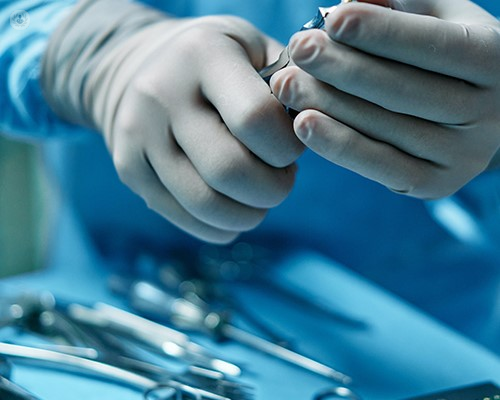Understanding fundoplication surgery: A guide
Written by:In his latest online article, Mr Ahmed Hamouda gives us his insights into fundoplication surgery. He talks about when surgical treatment of acid reflux symptoms is indicated, the procedure, what patients can expect, how safe surgery is and how different life is after fundoplication surgery.

When is surgical treatment of acid reflux symptoms indicated?
Acid reflux and heartburn are common symptoms affecting many people. Proper investigation is crucial, requiring a consultation with me or your doctor. During the consultation, we assess the severity of symptoms and their response to medical treatment. Once this is determined, we proceed with tests such as a camera-assisted O.G.D. and endoscopy to examine the lower end of the gullet for any issues like hernias, inflammation, or ulcers linked to acid burn.
Following this initial assessment, we delve into measuring acid reflux over a 24–40-hour period through a PH and manometry test. This test is particularly vital for surgeons considering corrective surgery, typically involving a fund application operation. This systematic investigative approach ensures we understand if acid reflux is a problem, its impact on the body, and allows us to make informed decisions about the most appropriate course of action.
What is involved in the fundoplication procedure?
Once we confirm that reflux is a genuine issue, with classical symptoms responding to medical treatment, but individuals facing challenges in staying on the medication or requiring increased doses over time, we can consider surgery after conducting the PH and manometry test. This test measures the extent of acid rising into the gullet.
Typically, surgery involves a keyhole procedure under general anaesthesia known as a fundoplication. This procedure entails taking the flexible part of the stomach and encircling it around the lower end of the gullet to establish a valve-like effect. Essentially, this strengthens the existing mechanisms, aiming to prevent stomach acid from moving up into the gullet—a procedure commonly referred to as a Nissen fund application, where a 360-degree wrap is created around the lower end of the gullet.
What can patients expect on the day of their procedure?
Before a keyhole procedure, there's a pre-assessment process where you undergo tests with a nurse, including bloodwork, and possibly an x-ray or ECG as needed. You might also meet with an anaesthetist. Once everything is set, we schedule your surgery day.
On the day of the operation, it's important not to eat or drink for at least six hours beforehand. When you arrive, we prepare you for the general anaesthetic. The procedure involves five small incisions in the upper part of the abdomen, allowing us to insert a camera and instruments.
The initial step is dissecting any hiatal hernia or part of the stomach that has moved above the diaphragm into the chest. We bring this part of the stomach back into the abdominal cavity. Afterward, we snugly secure the opening around the gullet with sutures. The next step involves taking the flexible part of the stomach and wrapping it behind the gullet in a 360-degree fashion. This recreates a valve at the lower end of the gullet, aiming to prevent stomach acid from flowing back into the gullet and causing symptoms.
How safe is this type of surgery?
Fundoplication operations with keyhole surgery have become notably safe. Around 30 to 40 years ago, this procedure was carried out through open surgery, involving a sizable incision stretching from the chest down into the abdominal cavity. It left a significant scar, traversing the diaphragm, and was a major operation associated with considerable risks and potential complications. In contrast, thanks to advancements in keyhole surgery, we now employ cameras from the inside, entering through the abdomen without the need to involve the chest. This procedure typically takes only 35 to 45 minutes of operative time, making it a relatively swift and safe operation with minimal risks. The standard risks associated with laparoscopic surgery, such as bleeding, infection, clots, or the possibility of converting to an open procedure, are inherent but generally low, as is common with various keyhole surgeries.
How is life different after undergoing fundoplication surgery?
Following a fundoplication, the lower part of the digestive tract becomes tighter due to the wrapped valve. Consequently, individuals may experience difficulty consuming large portions or swallowing substantial amounts of food. Certain foods like steak and bread might pose challenges, possibly sticking above the wrap. Our post-surgery recommendations include opting for smaller, more frequent meals, thorough chewing of food, and ensuring adequate time between mouthfuls for smoother digestion. This adjustment generally results in a slower pace of eating and increased chewing time, representing the primary change in eating behaviours after the surgery.
Mr Ahmed Hamouda is an esteemed Upper GI and bariatric surgeon. You can schedule an appointment with Mr Hamouda on his Top Doctors profile.


